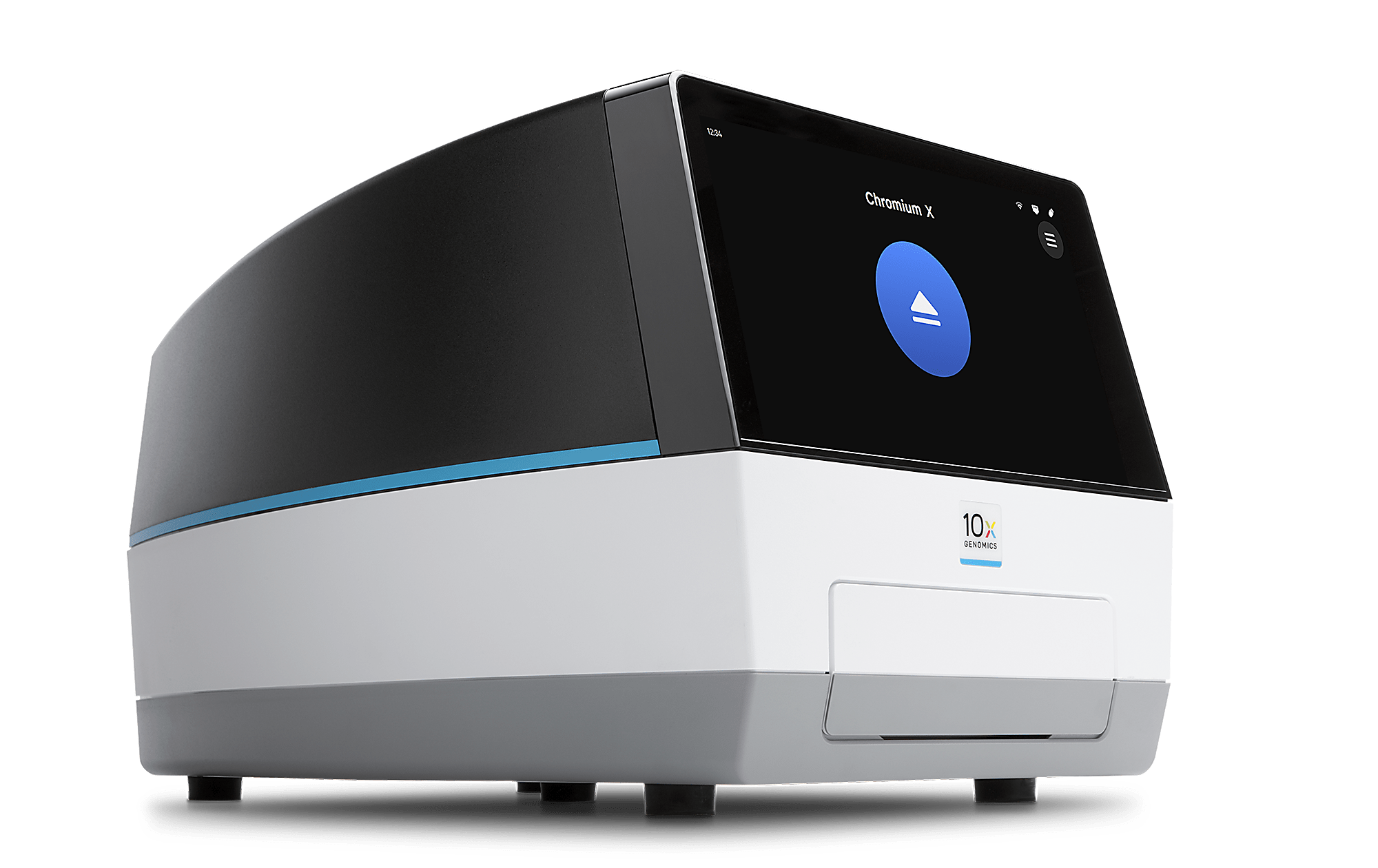Increasing the power of single cell resolution with expanded flexibility and scale: Introducing Chromium X
We recently announced the launch of our new Chromium X single cell instrument. Find out how this highly flexible system expands the reach of single cell transcriptomics to include everything from pilot studies to million-cell experiments, all with the simple touch of a button that unites proven technology with the power of scale.

Single cells leading the way to transformative results
Exploring heterogeneity at the single cell level has enabled significant insights into human health, disease, and the complex biological systems at work behind the scenes. While this technology is still relatively young, with the first single cell RNA-seq paper debuting in 2009 (1, 2), it’s made a powerful impact on our understanding of biology. Researchers saw its value in a wide range of applications, and, as handling techniques and computational analysis tools advanced to meet their needs, the goal of increasing throughput emerged as a common challenge.
In recent years, we have seen scientists push the limits of single cell transcriptomic techniques, scaling up their work to transform the way we look at normal development, disease progression, and treatment. Among these studies are investigations into cancer treatment and COVID-19 immune response, as well as the generation of comprehensive cell atlases. Transcriptional profiling of over 200,000 cells coupled with large-scale CRISPR perturbation screens provided clues to the mechanisms influencing resistance to immune checkpoint inhibitors in cancer therapy (3). A detailed record of the molecular architecture and neuronal diversity of the mammalian nervous system was built through RNA sequencing of half a million cells, providing a valuable resource for future work into understanding critical cellular interactions (4). The quest to understand dysfunctional immune response in COVID-19 patients motivated the immune profiling of 1.46 million cells from nearly 300 samples, resulting in a thorough map of the immune landscape that provides avenues for deciphering pathogenesis and developing therapeutic strategies (5). An examination of the dynamics of gene expression over the course of mammalian organogenesis yielded a global view of the cellular processes involved from transcriptional analysis of approximately two million cells, identifying hundreds of cell types and over 50 trajectories (6). The allure and promise of high-throughput sequencing is clear, with scientists looking to tackle their most complex biological questions with more extensive studies.
The new era of single cell is here
Our latest single cell platform, Chromium X, was designed to help you achieve your research objectives, with options for every stage of your single cell journey. This addition to the Chromium family of instruments expands experimental possibilities for single cell transcriptomics by leveraging proven technology and advanced hardware to yield high-quality data for everything from pilot studies to million-cell experiments.
Built to grow with you and your research, the Chromium X Series lets you take single cell studies at your own pace, starting with Chromium iX, which can handle your early-stage research and everyday experiments with ease. When the scope and scale of your research increases, a simple firmware upgrade will allow you to move up to Chromium X and begin your high-throughput investigations into more complex biological questions.
Advanced technology for ultimate flexibility and potential
Do you ever look back at your previous work and see new possibilities? Approaches you could have taken if only the technology had been ready for you? Chromium X, our most optimized single cell instrument yet, lets you take those ideas from concept to benchtop with maximum flexibility for assay type and throughput capacity. Now you can plan for the experiment that your research demands without worrying about assay limitations, and know that the technology and support is there to make it happen. With the Chromium X Series, you can:
- Perform any assay in our single cell portfolio, from 3’ gene expression to multiomic immune profiling, including our new high-throughput (HT) kits
- Leverage the same tried-and-true workflow to transition smoothly from pilot studies to even million-cell experiments
- Choose the scale that best fits your project, analyzing hundreds to hundreds of thousands of cells per run and reducing costs for comprehensive studies
- Take advantage of state-of-the-art hardware, with a temperature-controlled tray for more consistent single cell partitioning
- Connect to the cloud for automatic software updates, proactive support, and firmware upgrades
- Run your experiments with the simple touch of a button on an intuitive user interface
We’re thrilled to introduce you to Chromium X, and we invite you to join our webinar series for more information. Our first webinar, which provides details on its capabilities and the full breadth of its applications, is now available on demand. On August 12, we’re following up with a look at adding power to drug screens, immune receptor mapping, antibody discovery, and CRISPR screens. We’ll also take a deep dive into high-throughput data generated on the Chromium X platform.
Register now and explore the possibilities that Chromium X can bring to your lab.
References
- Aldridge S, Teichmann S.A. Single cell transcriptomics comes of age. Nat Commun 11: 4307 (2020).
- Tang F, et al. mRNA-Seq whole-transcriptome analysis of a single cell. Nat Methods 6: 377–382 (2009).
- Frangieh CJ, Melms JC, Thakore PI, et al. Multimodal pooled Perturb-CITE-seq screens in patient models define mechanisms of cancer immune evasion. Nat Genet 53: 332–341 (2021).
- Zeisel A, et al. Molecular Architecture of the Mouse Nervous System. Cell 174(4):999–1014.e22 (2018).
- Ren X, et al. COVID-19 immune features revealed by a large-scale single-cell transcriptome atlas. Cell 184(7):1895–1913.e19 (2021).
- Cao J, Spielmann M, Qiu X, et al. The single-cell transcriptional landscape of mammalian organogenesis. Nature 566: 496–502 (2019).
